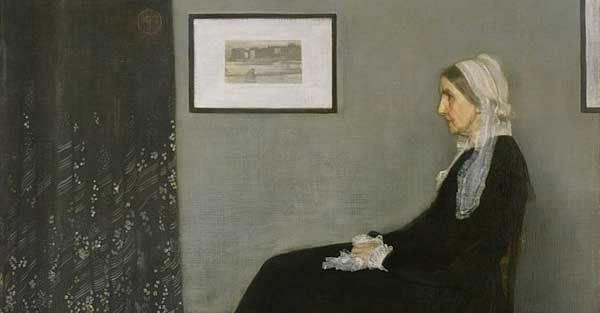
Whistler: A Life for Art’s Sake, by Daniel E. Sutherland, Yale University Press, 440 pp., $40
Shortly before his death, James McNeill Whistler expressed his distaste for biography, a not altogether surprising aversion for a man with ample reason to take issue with what others might have to say about him. Nevertheless, in 1900, the celebrated American artist reluctantly agreed to cooperate for a biography to be written by his longtime friends Joseph and Elizabeth Pennell. The work that resulted has stood for the better part of a century as the definitive account of Whistler’s life. But it was hamstrung almost from the start by battles between the authors and Whistler’s executrix, who after the artist’s death, in 1903, refused to cooperate with the Pennells and give them access to his diaries and letters. These battles are, in fact, far more interesting than the Pennells’ biography, which readers might be excused for having never slogged through. They laid out as many facts as they could but failed utterly to convey a sense of the man at the center of them all. Their Whistler was at odds with virtually everyone he ever encountered—notably John Ruskin, with whom he had numerous rows. The eminent British art critic recoiled from Whistler’s departure from realism toward more abstract and tonally sophisticated paintings that the artist called his nocturnes, a term borrowed from his friend, composer Claude Debussy. Describing Whistler’s approach to painting as “flinging a pot of paint in the public’s face,” Ruskin enraged the artist, who sued him for libel. The sensational case stood as a watershed moment in the expansion of the definition of art—and cast Whistler in almost mythical terms.
In his new biography of Whistler, Daniel Sutherland, an accomplished historian of 19th-century America, adopts a more evenhanded approach, discarding the Pennells’ brittle myth in his search for the man obscured by it. Where the Pennells focused on Whistler’s adult life (“The life of a child, for the first nine years or so, is not of much interest to anyone save his parents,” they wrote), Sutherland pays particular attention to the artist’s first 21 years, which, he contends, left an indelible stamp on the man and the artist Whistler was to become. The result, which takes advantage of newly available letters and diaries, is the first comprehensive biography of Whistler in at least a generation.
The artist’s early years in St. Petersburg, Russia, where his father built railroads for the czar, instilled in him his love for art, his sharp wit, and his penchant for getting into trouble—all of which would define his brief but colorful stint as a cadet under Robert E. Lee at West Point and would continually test the patience of friends and rivals alike.
 Sutherland is especially deft in his depiction of the artist’s mother, a woman exasperated by and indulgent of her son’s misbehavior. His insight into their relationship gives depth and texture to Whistler’s most famous work, Arrangement in Grey and Black No. 1, better known to us as “Whistler’s Mother,” and to the artist himself as “The Mother.”
Sutherland is especially deft in his depiction of the artist’s mother, a woman exasperated by and indulgent of her son’s misbehavior. His insight into their relationship gives depth and texture to Whistler’s most famous work, Arrangement in Grey and Black No. 1, better known to us as “Whistler’s Mother,” and to the artist himself as “The Mother.”
Whistler counted among his friends some of the leading poets, writers, composers, and artists of his generation. Sutherland is at his best when he deploys them in the service of elucidating Whistler’s character. Take this perceptive assessment of the artist’s friendship with Oscar Wilde, which Sutherland sees as emblematic of Whistler’s behavior:
What began, from Whistler’s perspective, as a master-student relationship soon became a contest of wits and wills between two evenly matched opponents. It could be argued that Whistler honed Wilde’s natural talent for the bon mot and clever repartee, while Wilde taught Whistler the nuances of stagecraft and performance. Physically, they would have made an ideal music hall team, with the tall, large-boned Irishman dwarfing the “gnome-like” American. In any event, their verbal jousting delighted London society.
Sutherland skillfully captures Whistler’s ambition, tenacity, and insecurity and presents his life in a narrative that does justice to both his triumphs and his failures. Matching wits with everyone he met, determined to best them at every turn, Whistler stood at the center of his era’s debate over the meaning of art and, as Sutherland contends, lived his life for art’s sake.


